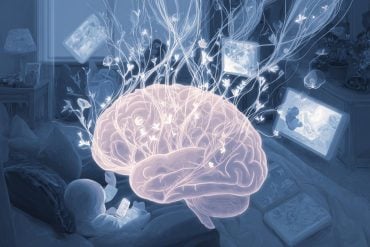Summary: New research reveals that people can consciously remove specific information from their memories by dampening the brain circuits that initially stored it. In a recent study, participants were asked to forget one of two items and later tested on the remaining relevant memories.
Brain scans showed that removing memory content involves reduced excitability in the neural circuits tied to the unwanted information. These findings offer insight into how the brain actively clears space in memory and may help explain how people manage intrusive thoughts or harmful recollections.
Key Facts:
- Active Forgetting: The brain can intentionally suppress memory traces using specific neural mechanisms.
- Circuit Deactivation: Forgetting is associated with reduced excitability in brain regions linked to the forgotten item.
- Mental Health Implications: This mechanism may help manage intrusive thoughts, rumination, or hallucinations.
Source: SfN
Removing information from memories may help people retain what they want to remember.
Studies focus on how the brain removes information by subconsciously not paying attention to these details, but sometimes there is a need to consciously remove unneeded details from memories.

This is especially true when details in a memory are perceptibly harmful and lead to, for example, people combating rumination, intrusive negative thoughts, or hallucinations.
In a new Journal of Neuroscience paper, Jiangang Shan and Bradley Postle, from the University of Wisconsin-Madison, explored how the brain actively removes unneeded memory content.
The researchers recorded the brain activity of nearly 30 study participants as they performed a memory task. In this task, participants were initially given two items to remember.
Experimental conditions either did or did not encourage participants to actively remove the memory of one of these items. Following these conditions, they were given a third item to remember.
Finally, participants were tested on their memory of the relevant first and final items.
The findings indicate a mechanism linked to consciously removing information from a memory: less excitable brain circuits that initially process unneeded memory content.
About this memory and neuroscience research news
Author: SfN Media
Source: SfN
Contact: SfN Media – SfN
Image: The image is credited to Neuroscience News
Original Research: Closed access.
“EEG Correlates of Active Removal from Working Memory” by Jiangang Shan et al. Journal of Neuroscience
Abstract
EEG Correlates of Active Removal from Working Memory
The removal of no-longer-relevant information from visual working memory (WM) is important for the functioning of WM, given its severe capacity limitation.
Previously, with an “ABC-retrocuing” WM task, we have shown that removing information can be accomplished in different ways: by simply withdrawing attention from the newly irrelevant memory item (IMI; i.e., via “passive removal”); or by or “actively” removing the IMI from WM (Shan and Postle, 2022).
Here, to investigate the neural mechanisms behind active removal, we recorded electroencephalogram (EEG) signals from human subjects (both sexes) performing the ABC-retrocuing task.
Specifically, we tested the hijacked adaptation model, which posits that active removal is accomplished by a top-down-triggered down-modulation of the gain of perceptual circuits, such that sensory channels tuned to the to-be-removed information become less sensitive.
Behaviorally, analyses revealed that, relative to passive removal, active removal produced a decline in the familiarity landscape centered on the IMI.
Neurally, we focused on two epochs of the task, corresponding to the triggering, and to the consequence, of active removal.
With regard to triggering, we observed a stronger anterior-to-posterior traveling wave for active versus passive removal.
With regard to the consequence(s) of removal, the response to a task-irrelevant “ping” was reduced for active removal, as assessed with ERP, suggesting that active removal led to decreased excitability in perceptual circuits centered on the IMI.






